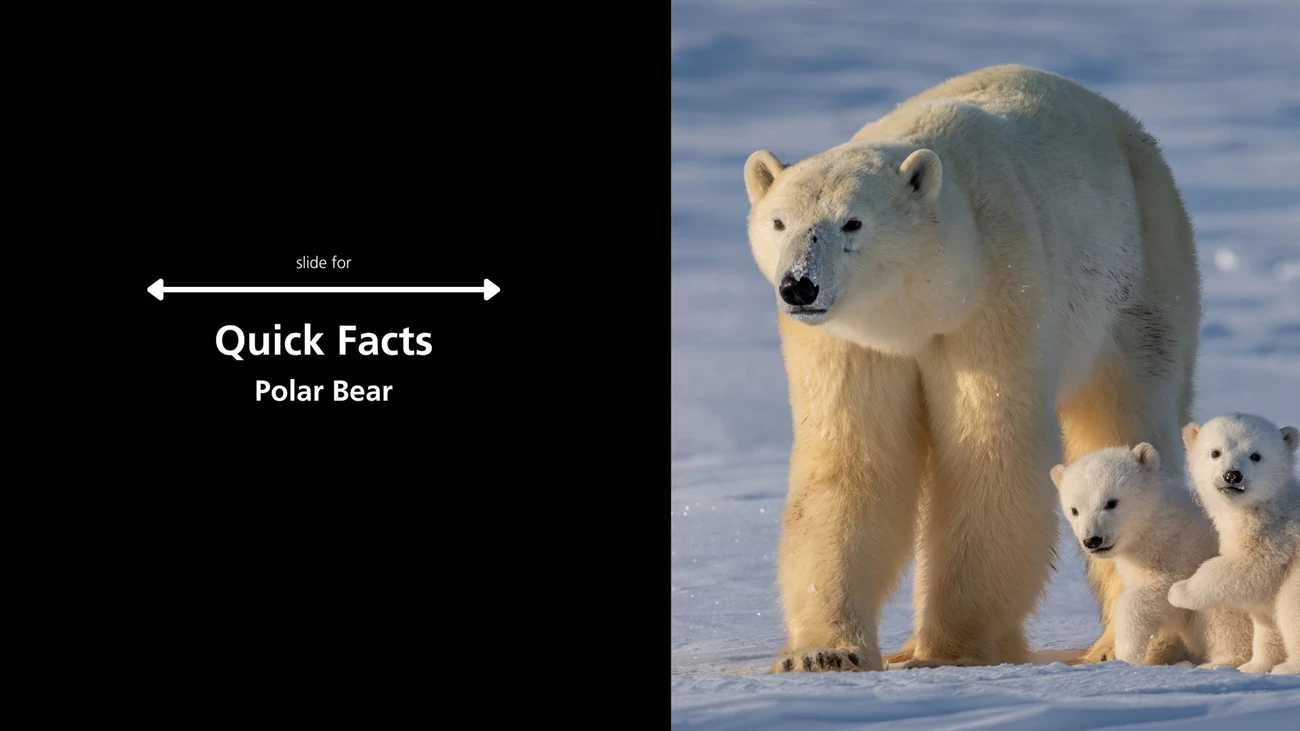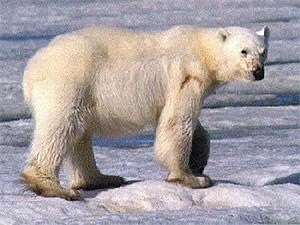

Text 1: slide for Quick Facts Polar Bear
Text 2: Quick Facts Polar Bear
- Height: About 5 feet at the shoulder and 7 to 10 feet standing upright.
- Weight: Ranges from approximately 400 to 1,450 pounds
- Average Life Span (in the wild): 25 years.
- Did You Know? Polar bears are the largest living bear species in the world.

NPS Photo
Polar bears (Ursus maritimus) are closely related to brown bears but have adapted to life in the snow and ice and live in the coldest environments in the nation. They have black skin to better absorb heat and thick white coats that repel water and provide camouflage in the snow and ice. Their large webbed paws help make them excellent swimmers.
In the United States, polar bears are found only in Alaska. There are two subpopulations of polar bears that use Alaska in some portion of their life cycle: the Chukchi Sea and Southern Beaufort subpopulations, which have an estimated 3,000 and 900 bears, respectively. Only two national park units—Bering Land Bridge National Preserve and Cape Krusenstern National Monument—are reported to have polar bears living nearby with a home range reaching into park boundaries. If you’d like more information about polar bears in a specific national park, please contact that park.
What Do Polar Bears Eat?
Polar bears eat more fat and meat than other bear species. They feed primarily on seals, but will also feed on whale carcasses when they are available. They have a strong sense of smell and can detect a carcass from nearly 20 miles away. When they are onshore and food is scarce, they will feed on marine mammal carcasses, birds, fish, terrestrial mammals, and berries.
Winter Dens
Because they hunt their primary prey (seals) on the sea ice throughout the winter and seals are more abundant at this time, only pregnant polar bears overwinter in dens to give birth. Dens can occur on the sea ice as well on land along the coast. Unlike black and brown bears that spend several months in metabolic dormancy, denning pregnant polar bears don’t “sleep” as deeply during the denning period.
Life Cycle
Mating typically occurs between March and June, however, embryos do not implant and begin to develop until autumn. Polar bears give birth to one to three cubs during the winter; twins are the most common.
Newborn cubs are 12 to 14 inches long and weigh a little more than a pound. In the spring, the mother bear and her cubs will emerge from their den.
Mother bears are very protective of their cubs, and sometimes have to protect them from male polar bears who are known to kill young of their species. Polar bear cubs grow rapidly and will stay with their mother for a little over two years learning survival skills.
Last updated: February 13, 2025
